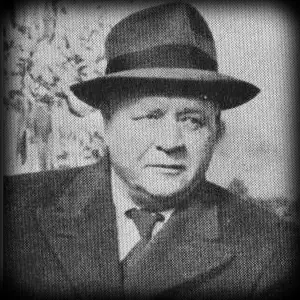LESTER MELROSE
 Lester Melrose was undoubtedly the most important producer of urban Blues in Chicago from the mid-20s into the post-War years. He pioneered the use of a house-band to give a consistently high quality of accompaniment to his featured artists, and his skill as an A&R man uncovered a wealth of talent in the Windy City. He also made himself rich by assigning himself the composing credits to over 3,000 songs, despite being unable to write or play a single line of music.
Lester Melrose was undoubtedly the most important producer of urban Blues in Chicago from the mid-20s into the post-War years. He pioneered the use of a house-band to give a consistently high quality of accompaniment to his featured artists, and his skill as an A&R man uncovered a wealth of talent in the Windy City. He also made himself rich by assigning himself the composing credits to over 3,000 songs, despite being unable to write or play a single line of music.
The Depression years of the early 30s were a slow time for selling anything, but by the middle of the decade, record sales were picking up and Lester came into his own. He developed the idea of a house-band with expert players in each rôle, and a basic line-up of drums, bass, piano, guitar and either harp or sax. This gave the records a ‘samey’ sound, but the results were consistently good, and the featured artist could concentrate on strutting their stuff. Chess, Stax and Motown were notable labels who copied this model. Lester had a good ear for Blues music, and John Lee ‘Sonny Boy’ Williamson, Memphis Minnie, Jazz Gillum, Lil Green, Big Maceo, Washboard Sam, Bukka White, ‘Big Boy’ Crudup, ‘Champion Jack’ Dupree and dozens of others got their start in Chicago with Lester although, in a rare moment of error, he turned away Muddy Waters!
The years after WWII were not so productive for Lester, as a new, hard-edged electric Blues took over from his sweeter ‘ensemble’ band sound. It was the accepted custom at that time for the producer to claim some or all of the publishing rights for the records they worked on, and Lester took this to extremes with thousands of tunes to his credit. When this body of work was plundered by big-selling white artists in the following years, like Elvis covering ‘Big Boy’ Crudup’s songs, Lester made a fortune and the musicians made very little. He had retired by then, relocating to Florida in the early 50s, and he passed away at his home in 1968.
